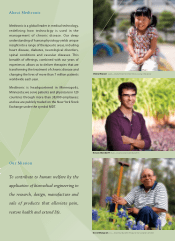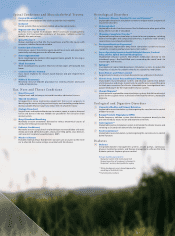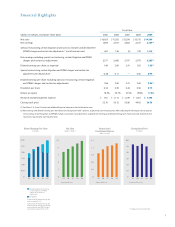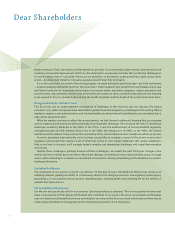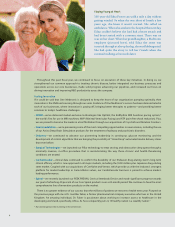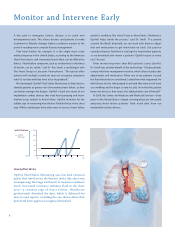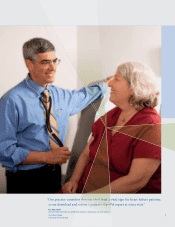Medtronic 2009 Annual Report Download - page 12
Download and view the complete annual report
Please find page 12 of the 2009 Medtronic annual report below. You can navigate through the pages in the report by either clicking on the pages listed below, or by using the keyword search tool below to find specific information within the annual report.
Improve Healthcare Economics
Game On
After having to be benched from
several fussball games because of
breathing trouble, 15-year-old
Andre Fischer knew something
was wrong. Sure enough, the
artificial heart valve he had
implanted at age 4 needed to be
replaced. The German teen wasn’t
too pleased, since the original
surgery required a hospital stay
of several weeks. But this time,
Andre received a Medtronic
Melody* pulmonic transcatheter
heart valve, which was inserted
through a vein in his leg during
a minimally invasive procedure.
Andre was happy to be home
three days after surgery and
back playing with his teammates
within two weeks. “Now I don’t
have to be pulled off during games
any more,” he said, smiling.
* Not cleared/approved for marketing in the
United States.
With worldwide healthcare expenditures already exceeding
$4 trillion, there are numerous efforts across the industry to
improve healthcare economics. At Medtronic, we continually
work to improve both the clinical outcomes and economic value
of our therapies. We can address both goals by making our
therapies less invasive, so they’re easier for doctors to deliver
and easier on patients, helping them recover faster.
One example is our endovascular stent grafts. They’re used
to treat abdominal and thoracic aortic aneurysms, dangerous
bulges or weakening of the body’s main artery that can rupture
and be fatal if left untreated. We pioneered a minimally invasive
way to insert the stent graft into the weak area of the aorta, by
threading it through the patient’s arteries vs. having to open
their chest or abdomen.
The clinical and economic benefits are significant: One
European study demonstrated that endovascular stent graft
placement required significantly less anesthesia time, shorter
intensive care stays and shorter overall hospital stays than
traditional open surgery in treating patients with thoracic aortic
aneurysms. Another European study reported that while the
upfront procedural cost of endovascular stent-graft placement
for thoracic aortic aneurysms was higher than traditional open
surgery, there was an overall cost benefit of 24.7 percent. The
savings were due largely to fewer care days required.
The benefits of endovascular delivery are so great that we’ve
developed similar delivery methods for other cardiovascular
products, including our replacement heart valves.
8


